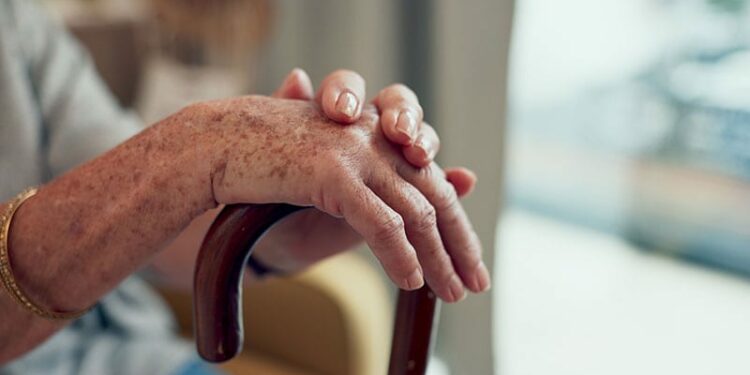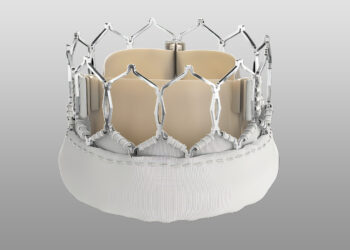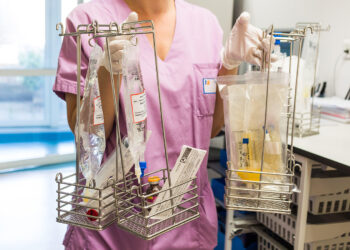[ad_1]
Adding transcranial direct current stimulation (tDCS) to constraint-induced movement therapy (CIMT) after stroke offered no additional benefit in improving upper extremity function, new research revealed.
After 2 weeks of treatment, tDCS at doses of up to 4 milliamps (mA) yielded similar results as sham stimulation when added to CIMT, with no significant differences in impairment, arm function, or quality of life.

“We confirmed the CIMT is actually pretty effective, but adding the tDCS doesn’t amplify the effect,” lead study author Wayne Feng, MD, professor of neurology and biomedical engineering, Duke University School of Medicine, Durham, North Carolina, told Medscape Medical News.
Although the results are disappointing, Feng said he is convinced his team is on the right track, and that this stimulation intervention will prove successful once the right dose is identified.
“I think we’re getting there; we just have to keep working on it,” he said.
The findings were presented on February 6 at International Stroke Conference (ISC) 2025.
Doubling the Dose
A type of noninvasive brain stimulation, tDCS involves applying a low-intensity electrical current through electrodes positioned on the scalp. The current stimulates the area of the motor cortex that controls hand function.
The stimulation device is small (it fits into the palm of the hand) and portable and can be paired with simultaneous rehabilitation therapy, such as CIMT. A common post-stroke rehabilitation strategy, CIMT involves wearing a mitt on the unaffected hand to force patients to use the stroke-affected side.
An earlier study using a lower intensity of electrical current of 2 mA coupled with CIMT showed inconsistent results. Other studies had suggested 4 mA might increase cortical excitability more than the lower dose. This, Feng said, suggested “we probably needed to increase the dose, to double it” to 4 mA.
The multicenter TRANScranial direct current stimulation for POst-stroke motor Recovery – a phase 2 sTudy included 129 adult patients (mean age, 59 years; 53% White) who had a first ischemic stroke within the past 30-180 days.
Research suggests the brain is more sensitive to rehabilitation therapy soon after stroke, so early treatment is important, Feng said.
Participants had moderate impairment, measured as a Fugl-Meyer Upper Extremity (FM-UE) score ≤ 56 (maximum, 66), and had at least some movement in the wrist and fingers.
Researchers randomized patients in equal numbers to receive either CIMT plus brain stimulation at 2 mA, CIMT plus brain stimulation at 4 mA, or sham stimulation. The three groups were generally well matched with respect to lesion volume, but the 2 mA group had a greater percentage of patients whose left side was affected by the stroke and fewer women compared with the other groups.
Participants completed 10 120-minute sessions over 2 weeks, with each treatment beginning with 30 minutes of stimulation and CIMT continuing throughout the entire session. The response was assessed immediately after treatment and at 1 and 3 months.
No Better Than Sham
The primary outcome was the FM-UE score at day 15 after the start of the intervention. Here, the adjusted mean change from baseline was 4.91 points in the sham group, 3.87 points in the 2 mA group, and 5.53 points in the 4 mA group.
Function improved in all groups, with improvement sustained at all follow-up points. However, there was no separation between the groups.
“Adding the tDCS, either 2 mA or 4 mA, didn’t amplify the effect,” Feng said. “We just couldn’t demonstrate that the 2 mA, or the 4 mA, is better than the sham.”
Despite this setback, Feng said he’s encouraged by other evidence suggesting that increasing the dose to 6 mA may be possible without affecting safety and tolerability.
“This was the first time we tested the higher dose, but we can probably go even higher,” he said.
Meanwhile, the research team plans to study the data to look for trends, Feng said. One thing they have picked up is that women seem to do better with the stimulation than men. It may be that the generally smaller size and different geometries of women’s heads may make it easier for the current to penetrate the skull.
There were no deaths or clinically important adverse events and few patients were lost to follow-up, even though the study was carried out during the COVID-19 pandemic.
“Subjects really complied with the procedure; they loved the intervention,” Feng said.
This helps confirm the intervention is tolerable as well as safe and feasible to implement in multitrial settings, he said.
Difficult to Study
Commenting for Medscape Medical News, Larry B. Goldstein, MD, Ruth L. Works professor and chair, Department of Neurology, and co-director of the Kentucky Neuroscience Institute, University of Kentucky, Lexington, Kentucky, said the study illustrates the challenge of developing new approaches to improve post-stroke outcomes.
That the stimulation didn’t add to functional improvements gained from constraint-induced therapy is akin to results of the multicenter Trial of Navigated Repetitive Transcranial Magnetic Stimulation for Motor Recovery in Stroke (the NICHE trial), published in 2018, Goldstein said.
“In that trial, goal-oriented motor rehabilitation improved motor function 6 months after the end of treatment, but there was no effect of transcranial magnetic stimulation trial arms,” he said.
Such post-stroke brain stimulation approaches may be difficult to study “because timing, intensity, targeting, concomitant physiotherapy, and dose may each be important,” Goldstein added.
This study received funding from the National Institutes of Health StrokeNet. Feng is a consultant for NAMSA and an advisor for Burke Rehabilitation Institute. Goldstein had no conflicts of interests.
[ad_2]
Source link : https://www.medscape.com/viewarticle/brain-stimulation-offers-no-benefit-post-stroke-hand-2025a10003av?src=rss
Author :
Publish date : 2025-02-10 10:28:46
Copyright for syndicated content belongs to the linked Source.














